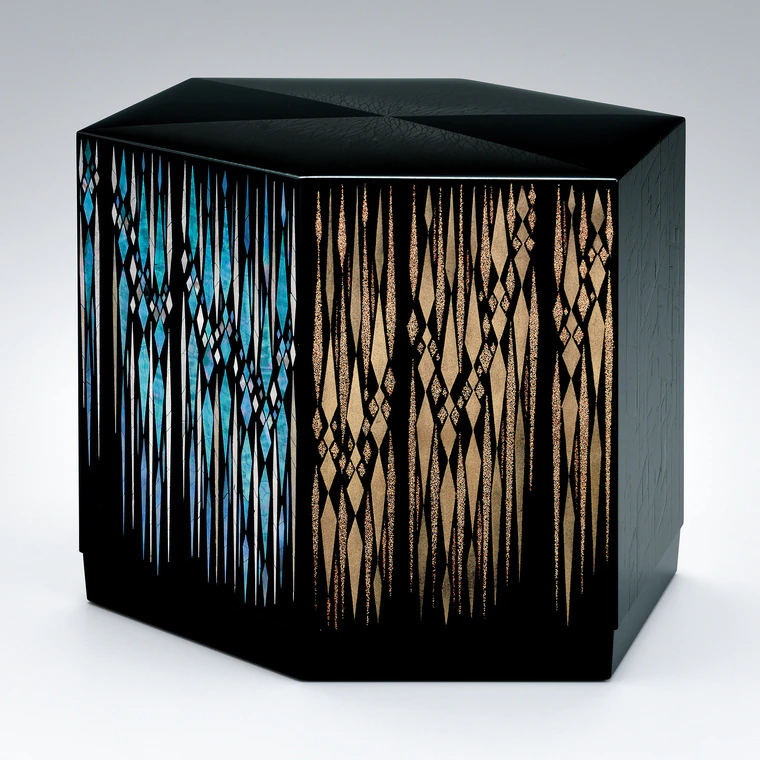Hexagonal box with design in makie. “Waterfall”
H 19.8 x W 20.1 x D 18.1 cm,Year.2017- according to today's currency rate
- shipping fees not included
Yuji Okado
1961 -- Lacquerware
- Public Collections : National Crafts Museum etc.
-
Price Range
$2,000 - 20,000
Info
The prices of the artworks on Gallery Japan are determined by the artists themselves and are published directly on the website.
close
About the Artwork
A waterfall that I came by as I walked into the mountains with overgrown weeds. I was overwhelmed by the power and sound of the water falling, and I had a strange feeling of my mind and body being purified as I felt the water splashing on me. I lost track of time while watching the waterfall. I wanted to express the solemnity of the waterfall and the passage of time in this piece.
On the front left side, I expressed the flow of the waterfall during the day using colored mother-of-pearl inlay, and on the front right side, the waterfall illuminated by the setting sun with gold powder.
On the sides, I expressed the rock wall using the ishimenuri (stone grained painting) technique.
Inside the box is the river flowing and fish swimming in the river in burnished makie.
Description
-
CategoryLacquerware
-
MaterialsCypress, Hemp cloth, Abalone shell, Gold powder, Silver powder
-
DimensionsH 19.8 x W 20.1 x D 18.1 cm
-
Year presented2017
-
Production period2 years
-
RarityUnique
-
Paulownia BoxIncluded
-
Artist SignatureSigned (name of artwork, paulownia box)
Techniques Used
Maki-e
Maki-e (literally “sprinkled pictures”) is a representative lacquerware technique that originated in Japan around 1,200 years ago. Maki-e is done by painting lacquer motifs on the surface of a piece using a fine brush and then sprinkling gold powder onto the lacquer before it hardens, producing luxurious decorations.
Mother-of-pearl inlay (Raden)
Mother-of-pearl inlay (Raden) is a decorative technique that uses the iridescent inner layer of abalone shell, turban shell, pearl oyster shell, or other mollusk shells. The technique came to Japan from China 1,300 years ago, and pieces featuring mother-of-pearl inlay are included among the artifacts at the Shōsōin Repository in Nara.
Awards received
- The 64th Japan Traditional Kōgei Exhibition (2017)
- Japan Kōgei Association Incentive Award

